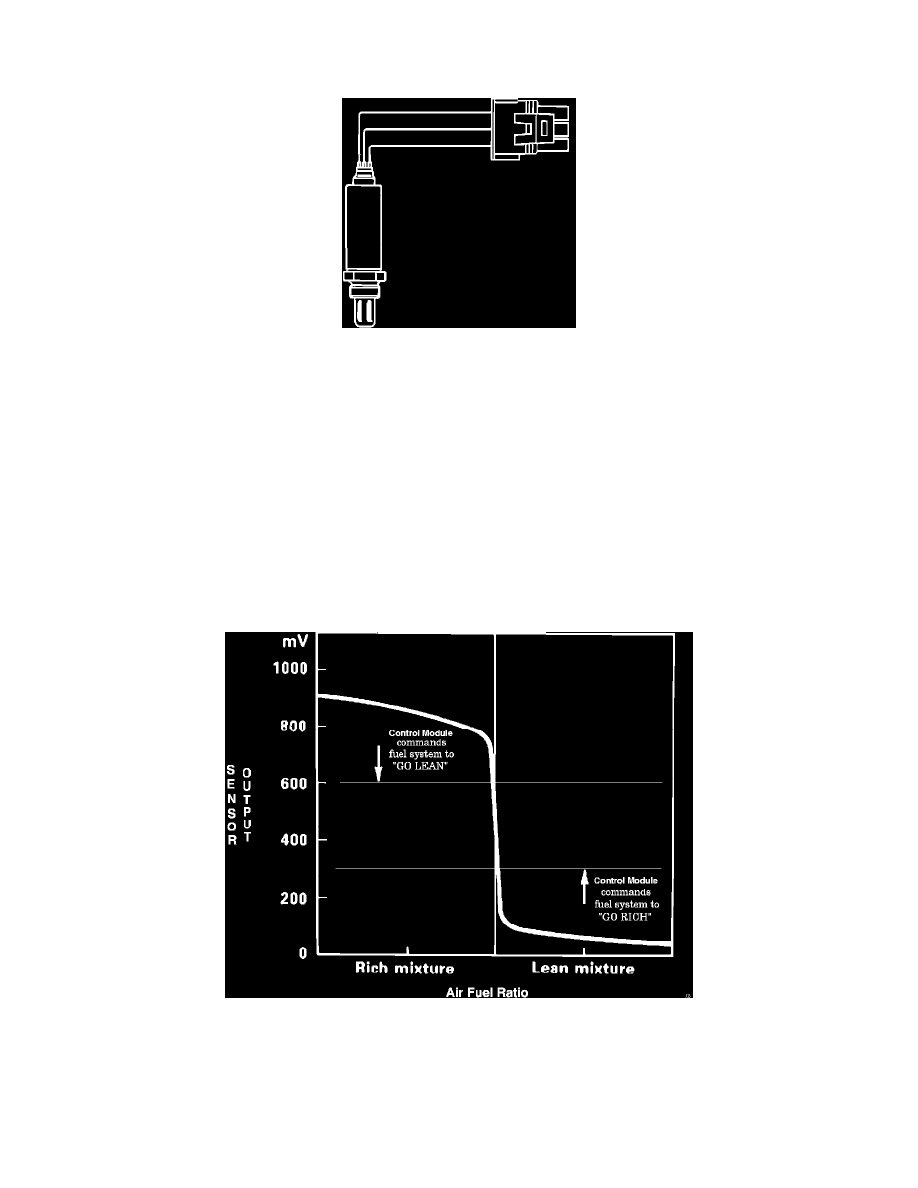Lumina V6-191 3.1L VIN T MFI (1993)

Oxygen Sensor: Description and Operation
Heated Oxygen Sensor (HO2S) - California Emissions
Heated Oxygen Sensor
PURPOSE AND LOCATION
The oxygen sensor, installed in the exhaust manifold, monitors exhaust gas oxygen content and produce a voltage output. The PCM uses this
voltage value to calculate the percentage of oxygen in the exhaust gas and adjusts the fuel injector pulse width to maintain the correct air/fuel ratio.
CONSTRUCTION AND OPERATION
The sensor consists of a hollow Zirconia element with a Platinum coating on its inside and outside surfaces. The open end of the element is
exposed to the atmosphere and its surface is connected to the ECU, while the closed end protrudes into the exhaust stream and its surface is
connected to ground. The oxygen sensor element only reacts efficiently with oxygen if the temperature of the element is around 300~C (575~F) or
hotter. When there is a difference in the amount of oxygen reacting with the inner and outer surfaces, a voltage potential is generated. The normal
operating voltage range is approximately 0.1-1.0V. Voltage increases when the concentration of oxygen in the exhaust is low (rich air/fuel ratio)
and decreases when the concentration is high (lean air/fuel ratio).
A heating element is built into the sensor to help bring it up to operating temperature more quickly and to maintain it at operating temperature
during periods of decelerating or prolonged idle, when it would otherwise cool off.
Oxygen Sensor Output Voltage vs. Air/Fuel Ratio
The difference in oxygen concentration in the narrow range of optimum air/fuel ratio causes a large voltage change that is easily measured.
